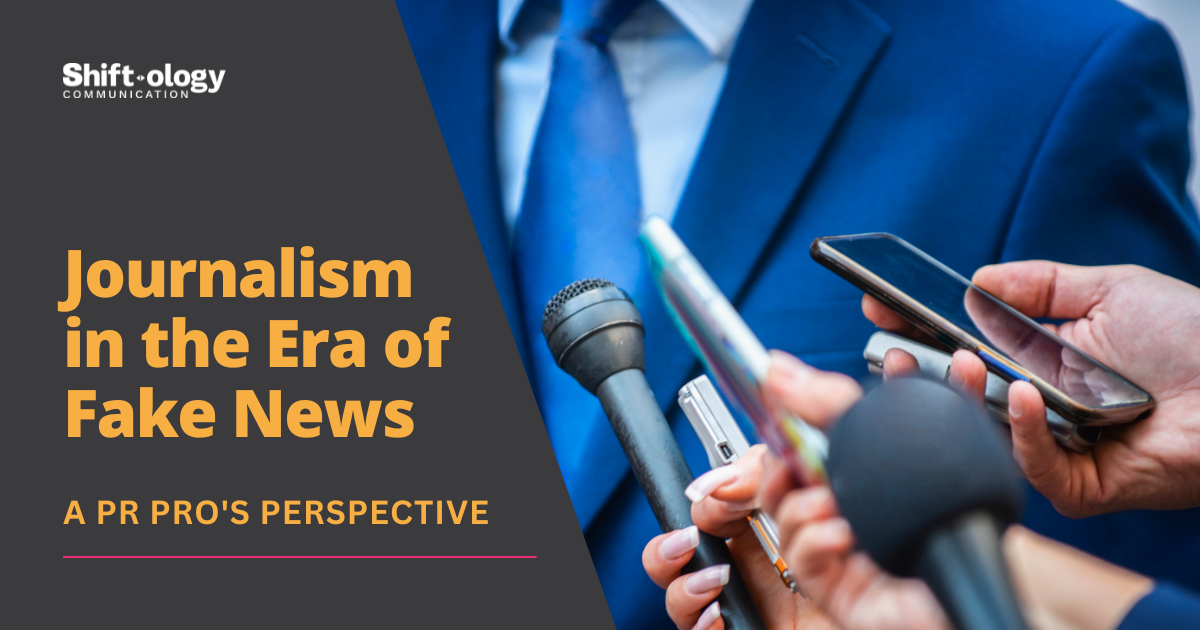Journalism in the Era of Fake News
A PR Professional’s Perspective
By Melanie Wilt, APR
Journalism has experienced a seismic shift in recent decades, thanks to evolving technology and news cycles, and persistent misinformation. I have a deep respect for ethical journalism as a public relations professional. My recent podcast conversation with longtime Ohio Public Radio and Statehouse Journalist, Jo Ingles, explored these challenges and the value of credible reporting. Here are some highlights and takeaways from our conversation.
Journalism Changes: From Razor Blades to Real-Time Reporting
Ingles, a veteran journalist with over 30 years of experience, painted a vivid picture of journalism’s transformation. Gone are her early days of reel-to-reel tapes and physically splicing audio with razor blades. Today’s stories are produced for TV, radio, web and podcasts, each with its own demands and nuances in digital-first newsrooms.
- Watch the entire episode above
- Watch/listen to more episodes
- Visit the Statehouse News Bureau
- Learn more about Jo Ingles
Technology has made information more accessible and reporting more immediate. Yet Ingles emphasized the core of journalism remains: tell stories that matter, hold those in power to high standards, and educate the public. “Being a journalist is teaching people something they don’t know about something they probably should know about,” she said.
The Human Element: Relationships and Trust
One profound shift we discussed is the changing nature of relationships between journalists, sources and the public. Relationships were once built on regular, face-to-face interactions, fostering trust and mutual understanding. Today, much of that rapport has been replaced by digital communication. It’s easier to obtain information, but harder to build genuine connections.
Both journalists and sources have become more guarded in response to spreading misinformation and pressures of a 24/7 news cycle. As a PR professional, I see this as both a challenge and an opportunity. A challenge because credibility is harder to establish. And an opportunity because those who prioritize transparency and ethical engagement can stand out.
Transparency and Accountability: Ohio’s Leading Example
Ingles highlighted Ohio’s commitment to transparency. Anyone can access the state’s legislative committee meetings online — an uncommon level of openness among states. This accessibility is vital in an era where skepticism about media and government abounds. It allows the public to witness the legislative process firsthand and reinforces accountability and trust.
The Role of PR in Supporting Ethical Journalism
In the era of fake news, the relationship between public relations and journalism is more critical than ever. PR professionals must champion accuracy, support journalists’ efforts to verify information and respect the boundaries that define ethical reporting. The Society of Professional Journalists’ Code of Ethics agrees. We’re not to manipulate narratives, but facilitate honest, open dialogue — a principle our conversation indicates we both hold dear.
Conclusion
Journalism faces unprecedented challenges but its mission endures. As technology evolves and the information ecosystem grows more complex, partnerships between ethical journalists and principled PR professionals are essential. By fostering trust, prioritizing transparency and supporting relentless pursuit of truth, we can help ensure credible news outlasts the era of fake news.
Learn more about Melanie Wilt, the founder and chief experience officer of Shift•ology Communication.

